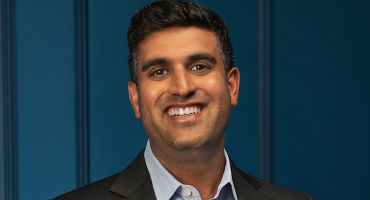Skip to main content
- Funds
- Insights
- Capabilities
- About Us
- My Account
The views expressed are those of the author at the time of writing. Other teams may hold different views and make different investment decisions. The value of your investment may become worth more or less than at the time of original investment. While any third-party data used is considered reliable, its accuracy is not guaranteed. For professional, institutional, or accredited investors only.
European high-yield fixed income has come under significant pressure since escalating inflation caused central banks to start tightening. While I think investors should brace themselves for further volatility, I believe the long-term case for European high-yield assets remains robust, with new opportunities beginning to emerge. So what’s the appropriate balance between protecting portfolios and positioning for opportunities that come with market dislocations?
There are many risks present in global markets currently, including persistent inflationary pressures, the energy crisis in Europe and geopolitical concerns relating to Russia’s invasion of Ukraine. In my view, the combination of these risks is likely to translate into a potentially extended period of below-trend growth and even recession. However, as a team, we do not see a deep global recession as our base case. Governments across Europe have stepped in to shield consumers and companies from the full impact of rising energy prices. Further, the banking system is more solid than it has been in the recent past and central banks are highly attuned to the risks associated with weaning economies off ultra-low interest rates. Consequently, I expect a slowdown that is akin to a week of blustery showers rather than a hurricane.
While accidents along the way cannot be excluded given today’s geopolitical instability and the impact of reduced liquidity, from my perspective this environment does not imply the full-scale default cycle that the market is anticipating. Based on current price and spread levels, market participants are forecasting a 5-year cumulative breakeven default rate of approximately 41%1 in European high yield, which, if realised, would be the largest default rate on record. I consider these default projections as overly punitive, particularly given credit fundamentals for euro high-yield issuers remain intact. Instead, I expect the 5-year cumulative default rate to be more in line with the historical average (approximately 16%), suggesting there may be opportunities to add to solid high-yield issuers at attractive price levels.
What’s more, following the sell-off this year, valuations have fallen back to historically attractive levels, creating a more attractive entry point for long-term investors, particularly given the level of excess return potential. Figure 1 depicts the 3-year forward excess return expectations at various spread levels. At current levels of between 485 and 768 basis points, euro high-yield fixed income has historically generated excess returns, relative to duration-equivalent government bonds of over 7% on a 3-year forward-looking basis.
While I do not expect default rates to rise to recessionary levels, I anticipate further uncertainty and volatility. In this type of environment deep, bottom-up fundamental research is important in identifying the issuers with sustainable cash flows to weather the heightened volatility.
In our portfolios, we use the Morningstar’s Moat framework as a key tool to determine whether a company has a sustainable competitive advantage or “moat”. This framework focuses on five moats — such as having a cost advantage that is hard to replicate or benefiting from high-quality intangible assets such as a brand or patent — as illustrated by Figure 2. We tend to avoid companies that do not possess any of these moats as, in our opinion, they are unlikely to outperform over the long term.

We complement this moat framework with a wide range of other perspectives — most notably an ESG lens — to help us look through short-term market concerns and determine which issuers we like from a bottom-up perspective. From a defence angle, we look to avoid sectors or geographies that are increasing in capacity as we believe these areas will experience higher default rates if the cycle turns. For instance, we are cautious on the semiconductor sector as our research suggests that the China/Taiwan conflict has resulted in over-capacity of semiconductors, particularly in Europe. As a result, we are cautious on exposure to issuers operating in that field. Conversely, we are more optimistic on European banks as we have seen increasing consolidation and cost cutting, which, in my opinion, should lead to future profitability.
I recognise that there are many risks to the economic outlook and further volatility is likely in the near term. At the same time, I see opportunities emerging, particularly for investors willing to do the research and venture into “out of favour” areas of the market when the time is right. Doing so, I believe, can help position portfolios away from those assets that are most vulnerable to potential downside, as well as help ensure readiness for eventual “market snapbacks” that could occur if macro conditions improve.
1Source: Bloomberg. Data as of 31 October 2022.
Featured new perspectives

Emerging markets debt outlook: A glass half full or half empty?
Against a still-challenging global backdrop for emerging markets, Macro Strategist Gillian Edgeworth highlights opportunities created by extreme credit spread dispersion across individual countries.
URL References
Related Insights
Stay up to date with the latest market insights and our point of view.
Related Insights

Impact measurement and management practices
What constitutes an impact investment? How is impact measured? And, what are the benefits of impact investing? Our Impact Management and Measurement Practice Leader Oyin Oduya discusses our approach.

Private biotech market: Innovation, valuations, and capital efficiency
Co-heads of biotech private investments I-hung Shih and Nilesh Kumar join host Thomas Mucha to explore today's private biotech market, highlighting the state of deal flow, valuations, and innovation.


Fixed Income Portfolio Manager Brij Khurana offers his latest thoughts on Fed policy following the central bank's recent Jackson Hole meeting.

The growing power of impact investing
Impact Measurement and Management Practice Leader Oyin Oduya appears on the WellSaid podcast series to discuss the future of impact investing, her research approach, and how her team thinks about generating market-rate returns alongside positive social and environmental outcomes.
URL References
Related Insights